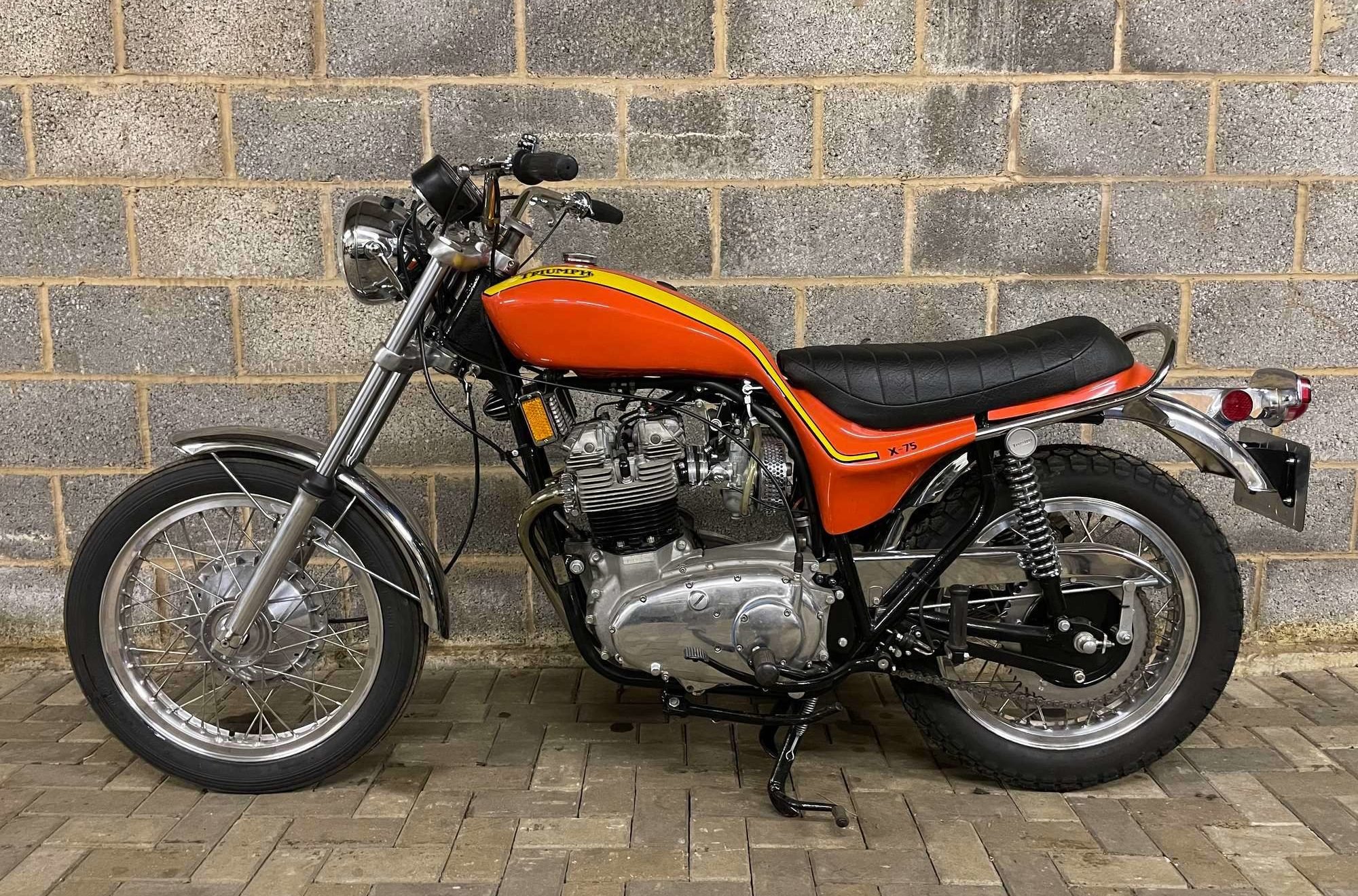The Triumph X75 Hurricane is a rare motorcycle, just 1,152 were built for the 1973 model year, and they all feature styling by American motorcycle design legend Craig Vetter.
The project to build the X75 Hurricane was undertaken in the United States, not in Britain, and it was originally set to be a BSA model – before BSA went belly up.
Fast Facts – The Triumph X75 Hurricane
- The Triumph X75 Hurricane was released as a 1973 model, just 1,152 were built and today they’re among the most collectible British motorcycles of the era.
- The project was launched by the vice-president of BSA’s US distributor Don Brown, he commissioned American motorcycle designer Craig Vetter to take the somewhat boring looking BSA Rocket 3 and make it “sleeker and more balanced.”
- Vetter designed a single piece of body work that went from the forward tip of the fuel tank down under the seat to the rear grab rail.
- The styling was panned by BSA/Triumph executives in Britain but when it was featured in Cycle World Magazine the American audience loved it, based on this reaction it was put into production.
Craig Vetter And The Hurricane
Craig Vetter is an American motorcycle designer who’s name should be far better known, he was instrumental in the creation of modern motorcycle fairings, and he’s dedicated much of his life to advancing both aerodynamics and fuel economy.
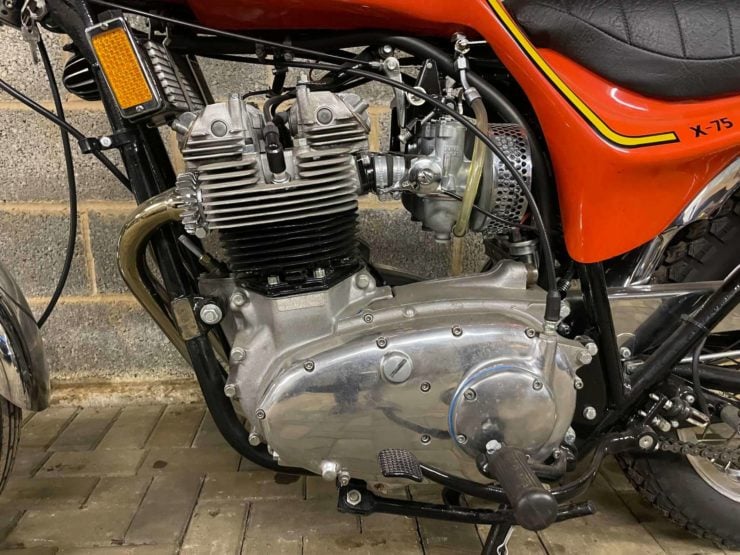

Early on in his career he was approached by the vice-president of the American BSA/Triumph distributor with an usual job offer – he was asked to take the somewhat staid looking BSA Rocket 3 and make it cool.
Vetter created a new single-piece of bodywork that extended from the forward tip of the fuel tank down to the rear of the seat. Its clean, swooping lines won it fans around the world, particularly in its target market – the United States.
The Demise Of BSA
Though the model was intended to be released as the BSA X75 Hurricane based on the BSA Rocket 3 the plans had to be abruptly changed when BSA went bankrupt.
The demand for the model was such that Triumph took over production, and it was instead released as the Triumph X75 Hurricane.
The Arrival Of The Triumph X75 Hurricane
Vetter had originally unveiled his design in 1969, the executives at the American distributor loved it, old guard at BSA didn’t like it one bit, but they were resoundingly outvoted by an eager American general public.
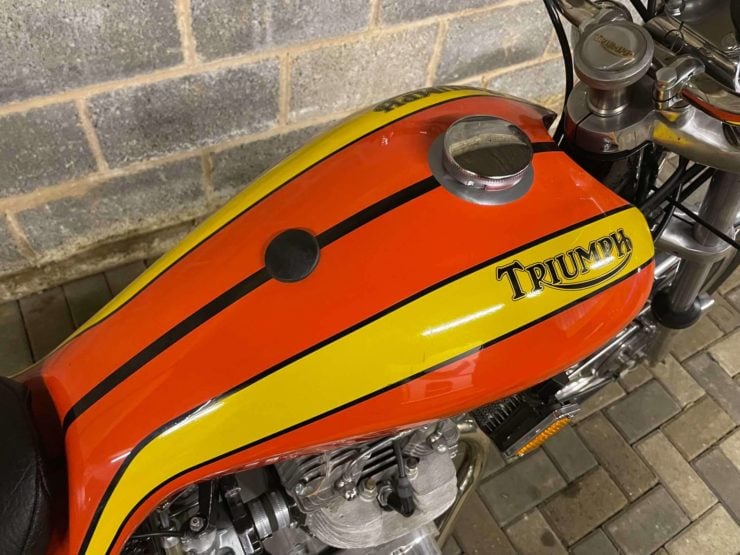

Sadly, BSA was facing bankruptcy, in a large part due to previous bad decisions that had been made by the same old guard who hadn’t liked the Vetter Hurricane.
The bike was put into production in 1972 for the 1973 model year as a limited production run of a 1,200 planned units. By the end just 1,152 were built, today they’re considered highly collectible but it’s important to ensure you get an original – many replicas have been made over the years.
Triumph X75 Hurricane – Specifications
Vetter had based his design of the Hurricane on the BSA Rocket 3/Triumph Trident motorcycle. This was an air-cooled inline-three cylinder motorcycle with a displacement of 740cc that produced 58 bhp at 7,500 rpm.
The early versions of the model had a 4-speed gearbox (unit construction), later models received a more modern 5-speed transmission. All models had a tubular steel duplex cradle frame, with standard telescopic forks up front, and twin shock absorbers in the rear with a tubular steel swing arm.
The standard factory design of both the BSA Rocket 3 and the Triumph Trident was very similar. It was closely based on earlier designs and lacked the revolutionary new look that the US distributors were hoping for.
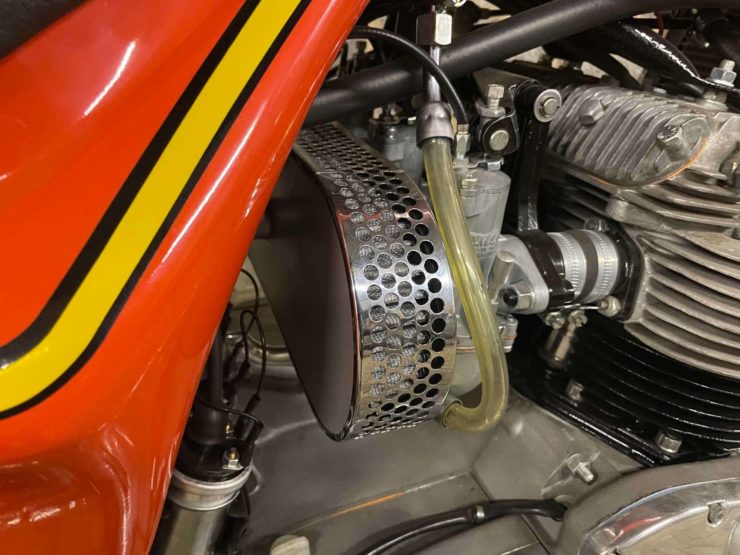

This disappointment is what led to them approaching Vetter, setting the wheels in motion for the creation of the X75 Hurricane.
The Triumph X75 Hurricane Shown Here
The bike you see here is a 1973 model year Triumph X75 Hurricane, as they all were, and it benefits from an older restoration. It was first registered in the UK in 2019 and it’s a matching numbers example.
Since its restoration this bike has been kept largely off the road, it’s showing just 15 miles on the odometer, and it’s noted that it may require some recommissioning before road use.
If you’d like to read more about or register to bid you can click here to visit the listing. It’s due to cross the auction block with Silverstone Auctions on the 14th of May and the price guide is £20,000 – £25,000, which works out to $26,400 – $33,000 USD.
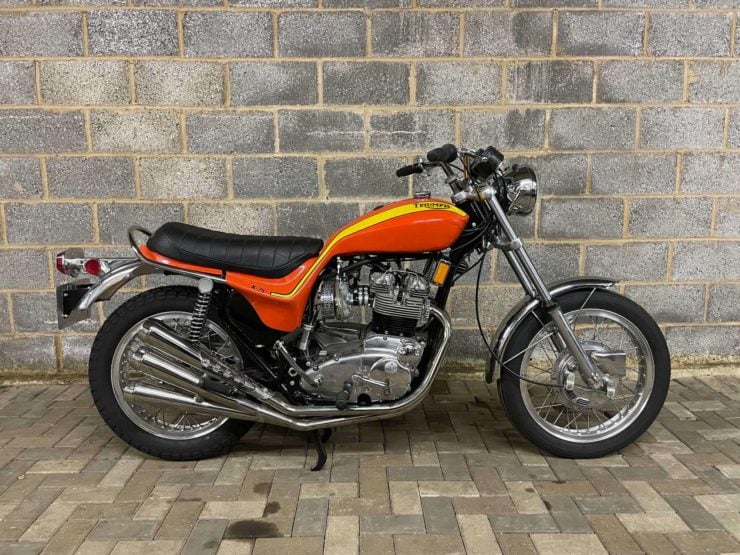
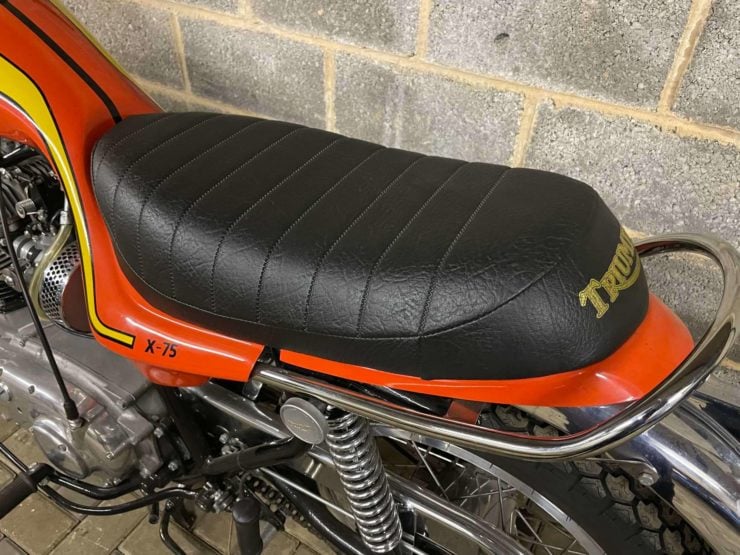
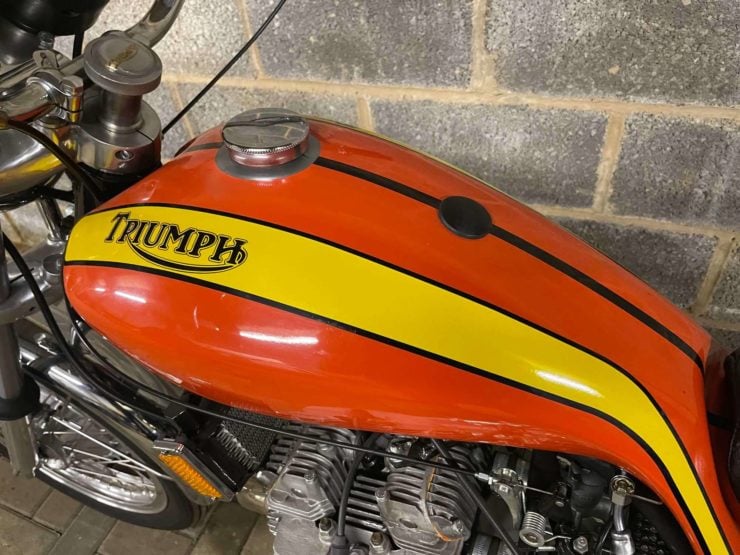
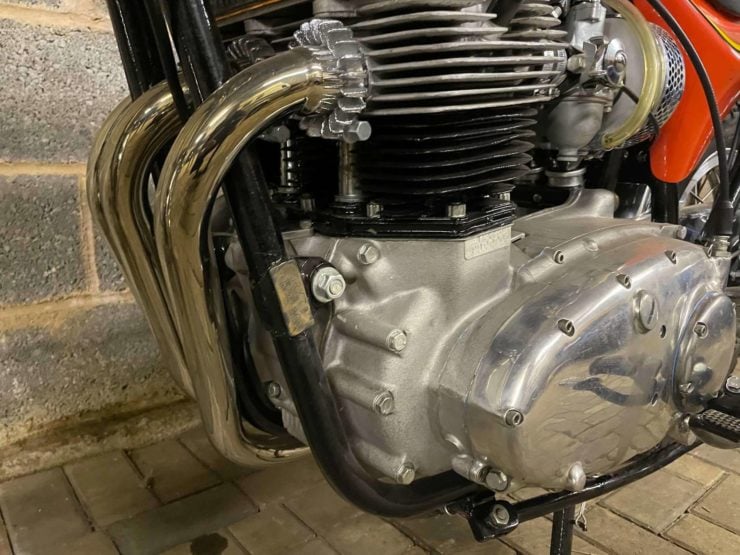
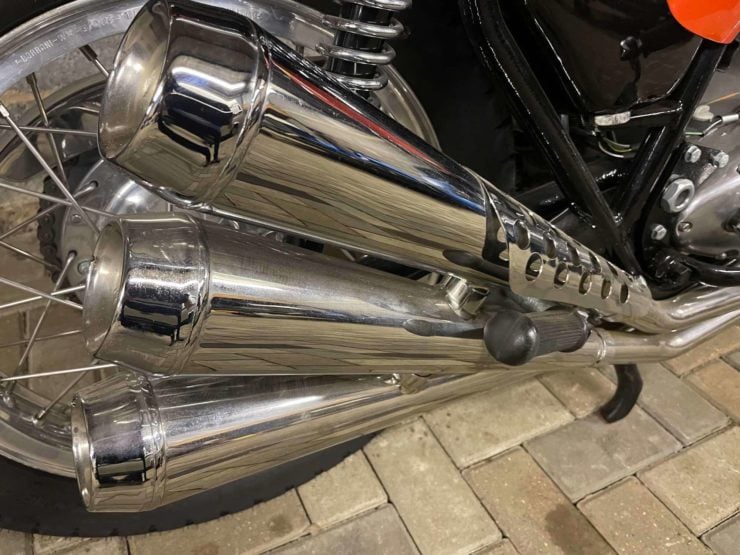
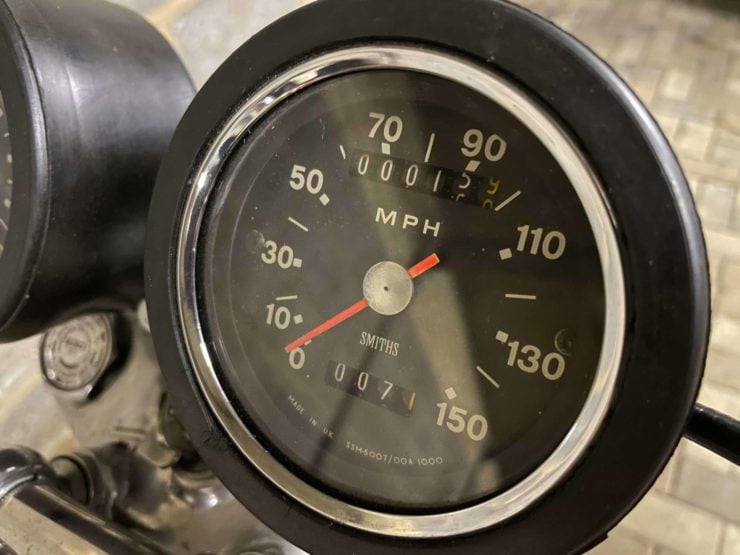
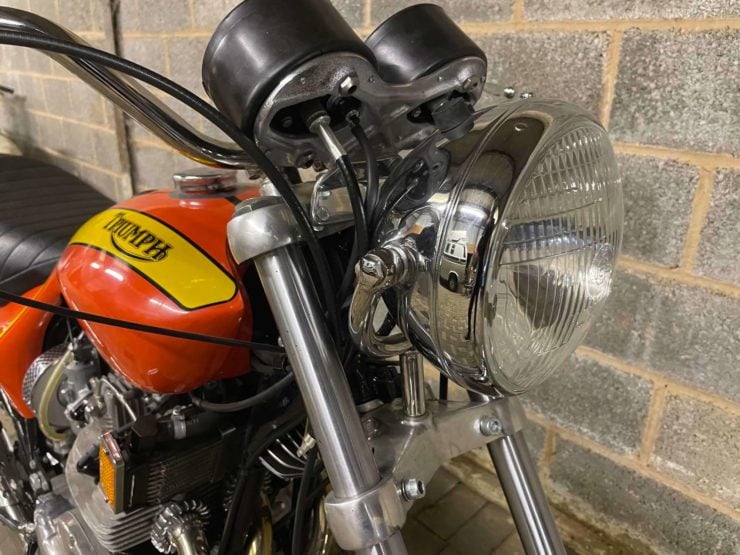
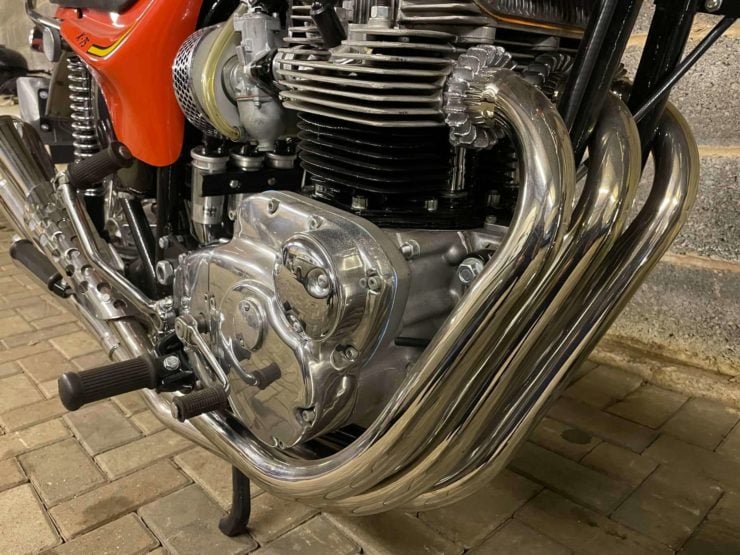
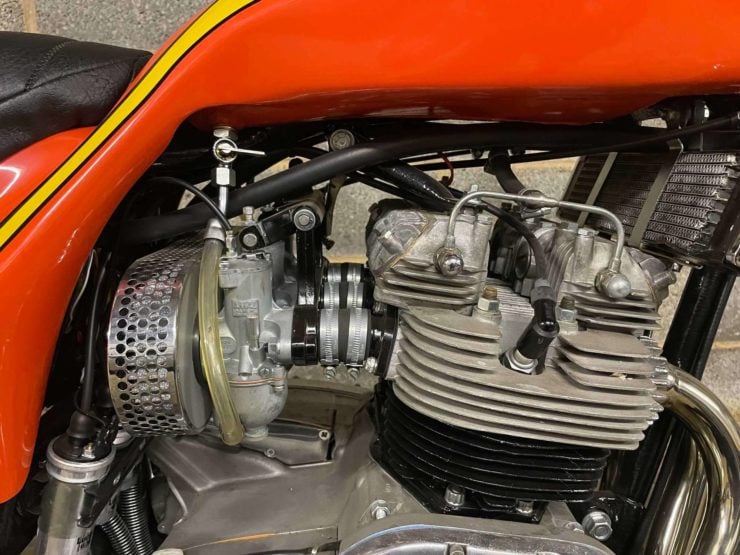
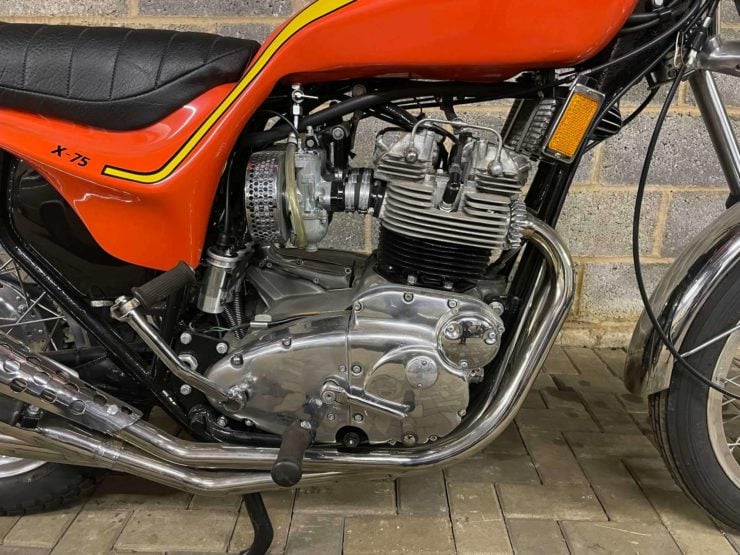
Images courtesy of Silverstone Auctions

Ben has had his work featured on CNN, Popular Mechanics, Smithsonian Magazine, Road & Track Magazine, the official Pinterest blog, the official eBay Motors blog, BuzzFeed, and many more.
Silodrome was founded by Ben back in 2010, in the years since the site has grown to become a world leader in the alternative and vintage motoring sector, with millions of readers around the world and many hundreds of thousands of followers on social media.
